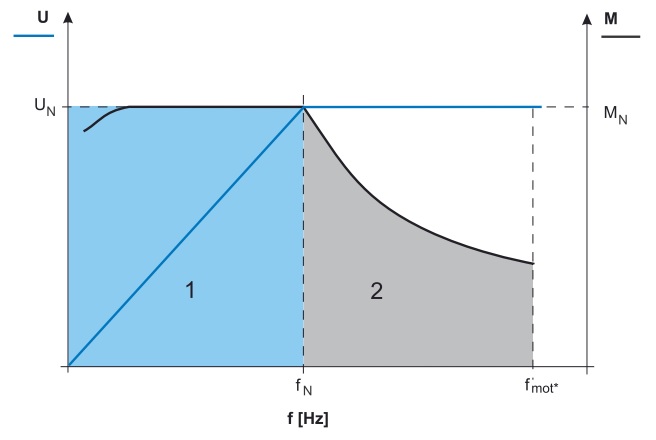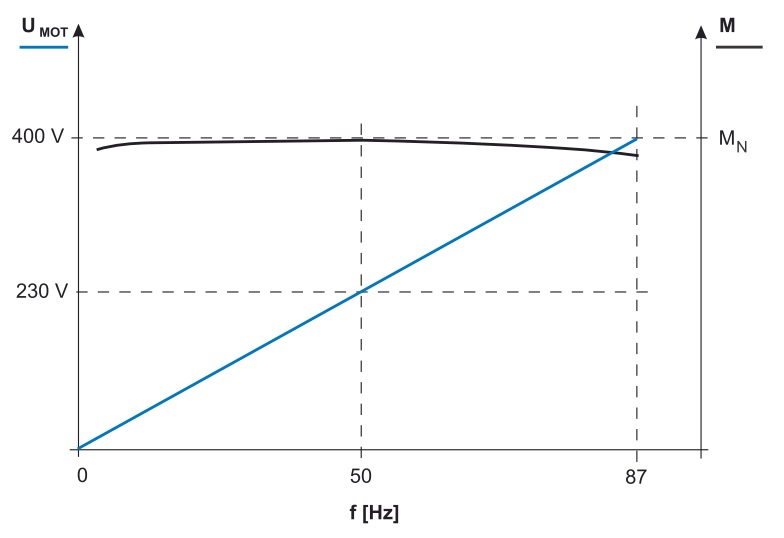Constant Torque Operation of Asynchronous Motors 0–87 Hz
Drive controllers can adjust the speed of asynchronous motors to any value with minimal losses. This article provides information on the operation of asynchronous motors both below and above their rated frequency.
Operation Below Rated Frequency
Operation of self-ventilated asynchronous motors below approximately 60% of their rated frequency requires limiting the motor current, and consequently the torque. Otherwise, the motor may overheat. This type of limitation is not necessary for motors with forced ventilation.
Operation Above Rated Frequency
The motor can also operate above its rated frequency. Two basic modes of operation are explained below:
-
Field weakening operation
-
Operation according to the 87 Hz characteristic
Field Weakening Operation
When a motor operates above its rated frequency at a constant rated voltage, it is considered to be operating in the field weakening range. In this mode, the drive controller is configured for a maximum frequency higher than the rated frequency (e.g., 80 Hz / 400 V). As the drive frequency increases, the motor speed also increases; however, the torque decreases proportionally because the magnetic flux in the motor drops. The motor can be operated in the field weakening range (illustrated in figure – area 2) using both delta and star connections.

Operation According to the 87 Hz Characteristic
In this mode, the motor speed also increases proportionally to the motor voltage, reaching values above the rated frequency. During this process, the torque remains nearly constant. To achieve this, a motor (50 Hz, 230/400 V) is connected in a delta configuration (50 Hz, 230 V), but the drive controller is set to (87 Hz, 400 V). This allows an increase of the motor speed by a factor of √3 times the nominal frequency (87 Hz) while maintaining nearly constant torque. Thus, the motor voltage is also continuously increased, allowing the motor to operate with a constant magnetic flux instead of entering the field weakening range.

